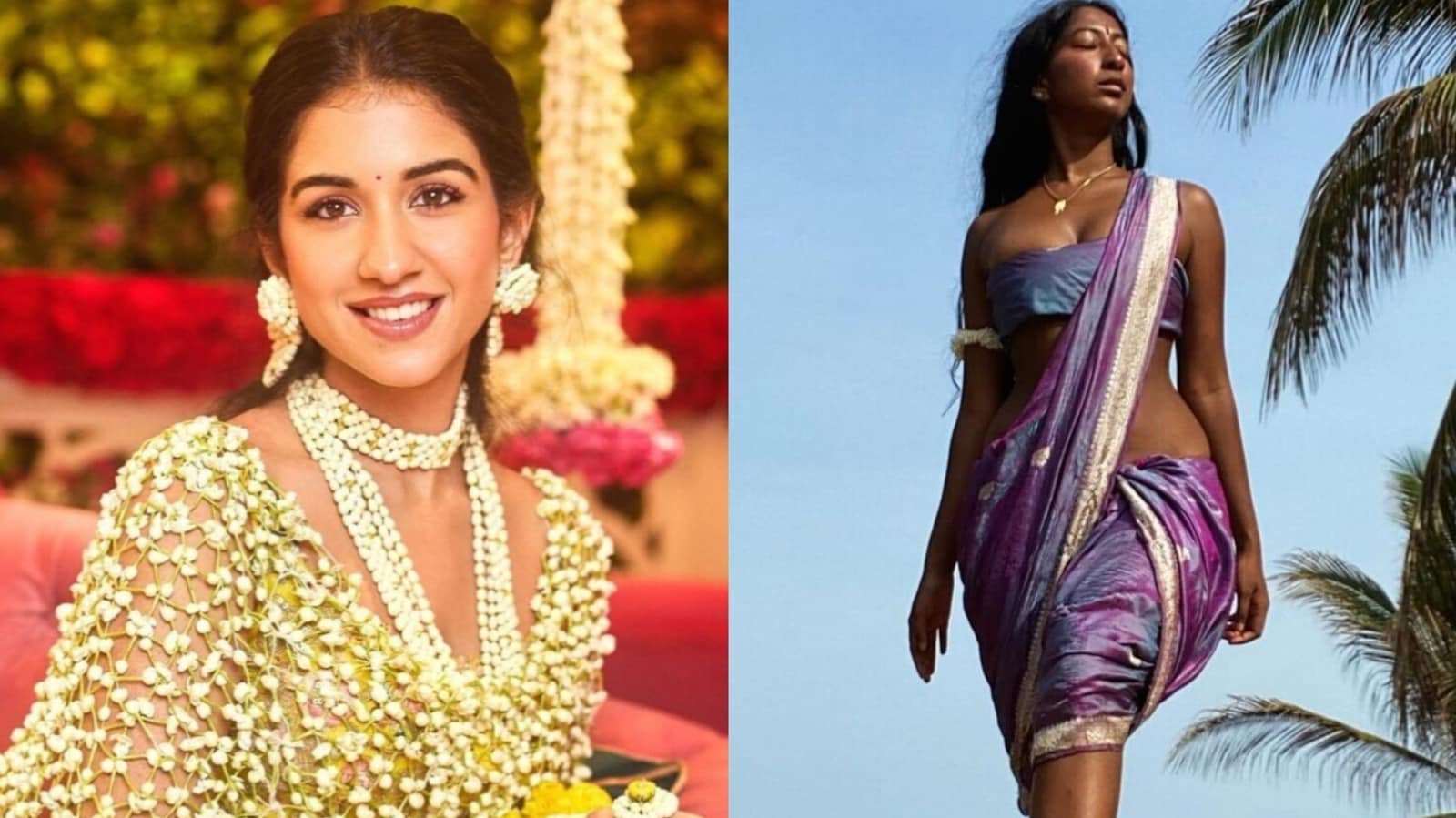Indian culture is the sari. This timeless garment is more than just a piece of cloth – in most households it is a symbol of heirloom, passed down through generations. From the grandmothers who first bought it to the mothers who lovingly lent it to them, the sari often serves as an inexpensive yet priceless family heirloom. However, the art of draping a sari, an essential skill in bringing this garment to life, is slowly fading from memory.
Ironically, those who seem to be most affected by this loss are A-list celebrities and actors. Nowadays, many actors and celebrities don’t wear their own saris, even for important events like weddings. Instead, they rely on professionals to do it for them; a new wave of professionals and influencers enter the scene who are keeping this tradition alive, each adding their unique touch to the draping.
It is worth noting that in the world of sari-making, few names are as well-known as that of Dolly Jain. Her journey from learning the craft at the insistence of her mother-in-law in her early 20s to becoming a sought-after artisan for India’s elite, including the Ambani family, reflects her dedication to this traditional art form. Today, Dolly’s expertise is often in demand at high-profile events, where her skilful sari-making is a blend of tradition and personal style.
While Dolly Jain has mastered and maintained the conventional methods of draping, a new generation of influencers is reinventing this ancient art. These modern drapers, like Natasha Thasan and Pooja Jagadeesh, are pushing the boundaries of tradition, making the saree more accessible and modern for today’s youth.
How social media is modernizing this traditional garment
One such influencer is Natasha Thasan, a pioneer of “draping therapy.” Also known as “the saree architect” or “apsara,” Natasha has garnered a worldwide following with her unconventional draping styles. With roots in Sri Lanka, Natasha is a strong advocate of her heritage, but also believes that the sari should be worn by all people, regardless of cultural background or gender. Her innovative draping, which can be designed in less than a minute, challenges traditional methods and redefines what it means to wear a sari in today’s world.
Another icon of the industry is Pooja Jagadeesh. Unlike many others who grow up wearing saris, Pooja adopted the garment later in life. Her mother’s collection of saris inspired her, but it wasn’t until a few years ago that she started wearing them herself. Looking for ways to integrate the garment into her lifestyle, she experimented with draping techniques that transformed the saree from a traditional ceremonial garment to something she could wear casually to work or travel.
Ashwini Narayan, a saree stylist and draping artist, adds another layer of modernity to the saree and is on a mission to make the saree modern, attractive and easy to wear for everyone. Through her work with saris and handlooms, Ashwini has embraced a more sustainable lifestyle; often taking inspiration from her parents who exemplified a zero-waste lifestyle by recycling and reusing everything. Ashwini’s philosophy is simple – for her, a saree is forever!
Have these influencers really changed things?
In recent years, the sari has undoubtedly enjoyed a resurgence, thanks in part to innovative styling that blends tradition with modern fashion. Indian brands such as The Saree Sneakers have popularised the idea of pairing sneakers with saris, while in Sri Lanka, designer label Urban Drape specialises in saris paired with crop tops. These non-traditional ways of wearing a sari may surprise purists, but they offer a fresh and fun way for people to express their authentic selves.
The importance of the sari goes beyond its aesthetic appeal. In her essay Sari and the Narrative of the Nation in 20th Century India Author Aarti Kawlra examines how the sari emerged as a symbol of “indigeneity” during the nationalist movements of the early 20th century. Aarti writes that the sari became an emblem of South Asian culture and feminine beauty: “So central was the sari to the nationalist narrative that, from the early 20th century, it was used to create the persona of a ‘proper’ Indian woman within increasingly gendered social norms.”
This deep cultural significance adds another layer of importance to the modern resurgence of saree draping. Thanks to these influencers, the art of saree draping not only survives but thrives in the changing fashion ecosphere. By modernizing this ancient practice, they ensure that the saree remains relevant, modern and accessible to all.
Disclaimer:
The information contained in this post is for general information purposes only. We make no representations or warranties of any kind, express or implied, about the completeness, accuracy, reliability, suitability or availability with respect to the website or the information, products, services, or related graphics contained on the post for any purpose.
We respect the intellectual property rights of content creators. If you are the owner of any material featured on our website and have concerns about its use, please contact us. We are committed to addressing any copyright issues promptly and will remove any material within 2 days of receiving a request from the rightful owner.

